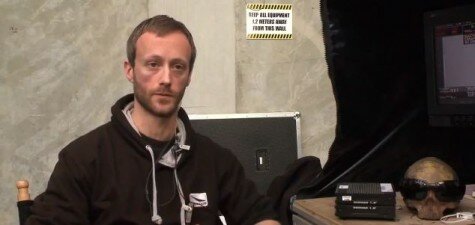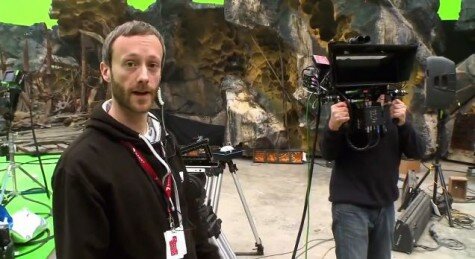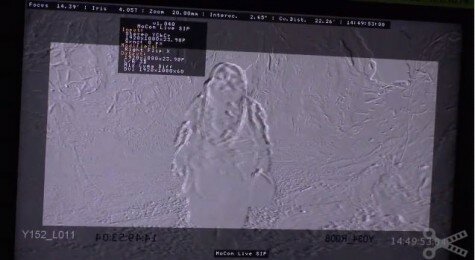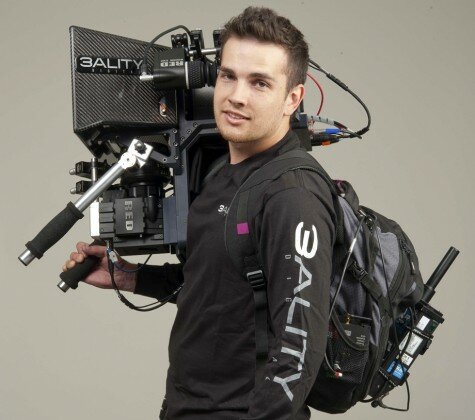3D Camera Supervisor of ‘The Hobbit’ Talks High Frame Rates
3D NEWS> 3D FILM
Gareth Daley was the 3D Camera Supervisor on The Hobbit: An Unexpected Journey, looking after 48 RED EPIC cameras on 17 3ality Technica rigs for 277 shoot days. Daley worked with Peter Jackson in New Zealand for District 9, where he was the RED Camera Supervisor.
After meeting 3ality Technica representatives in LA, he became involved in The Hobbit test shoot for Peter Jackson using prototype RED EPIC cameras on 3ality Technica rigs.
Daley says: “We were given about a week to prep and he really put the stuff through its paces. He never just stuffed a camera on a tripod and rolled with it. We did a World War Two scene with lots of fighting going on as well as some Hobbit scenes too. We really tested the camera and gear and from there I got invited back to do The Hobbit to supervise the 3D rigs and workflow.”
Gareth Daley spent the last two years on the three Hobbit films, with some final filming for the third film due to be completed next year.

Gareth Daley, 3D Camera Supervisor on The Hobbit
Being Daley’s first 48fps movie, we wanted to know how the format changed his workflow:
Gareth Daley: “48 frames certainly did provide a lot more detail for the make-up artists and set designers and that was a difficulty for them. For me – having two cameras in permanent perfect sync at double the frame rate as normal was the biggest challenge but RED was fantastic. Early on, when we decided in pre-production it was going to go 48 frames, we worked very closely with them. They were providing us with the firmware changes for the cameras, sometimes on a daily basis."
3D Focus: Were there any shots that had been specifically designed to take advantage of the clarity that HFR provides?
Gareth Daley: “No. The beauty of those cameras is that we are actually able to do 96 and even higher than that as well which was halving the speed even further. We used 96 and other "off speed 48" frame rates. Because there was such a ceiling above 48 on the EPIC, it was essentially shooting film; there was nothing different about it. It was a very natural filmmaking process. There is talk of even going up to 120fps. Who knows where it will stop but projection technology is only just catching up in terms of the flexibility of what they can project at. In terms of sound, 48 is a multiple of 24, so technology wise, with other peripherals coming into production, that was a reason to go 48 but I think in the future – it won’t stop at 48. However, you are talking double the frame rate we have seen in the past 80 years so it’s a huge step."

Gareth Daley near 3ality Technica Ts-5 camera
3D Focus: Do you personally like the ‘look’ of HFR?
Gareth Daley: "Personally, after spending many hours watching rushes every week, I love it. It’s the right ingredient to make 3D work because you do lose that entire flicker. It makes the 3D a lot more comfortable to watch. When I go to a 3D movie, I have to take the 3D glasses off after a while but I found when watching the rushes I was always leaving my glasses on because it was so easy to watch and that seems to be across the board.
It’s like you are watching something that is happening right now. The difficulty people have is people go to see a film and expect to see something historic that happened in the past. 48fps makes you feel like it is happening there and then. It is like you really are watching the story unfold and then, on top of that, you are getting double the texture in the visual effects, which are just absolutely stunning. You are watching the screen in astonishment at how detailed something looks.
I think Peter was brave in challenging that tradition – it doesn’t have to be like that."

Convergence is adjusted on set
3D Focus: Was it technically different to shoot in 48fps?
Gareth Daley: "It was basically the same, just double the render time. You had 5K files, then you had the 3D which is double and then 48 is doubling it again so the data in post across the board was huge, not to mention the huge amount of footage shot."
NEVER MISS A 3D NEWS STORY – SIGN UP TO THE FREE WEELY E-LETTER VIA SIGN UP BOX ON THE RIGHT SIDE BAR
3D Focus: Was 3D used in a unique way on The Hobbit?
Gareth Daley: "Using the 3ality Technica rigs we were able to converge on set – we didn’t shoot parallel, we have not posted converted, we shot 3D live. The convergence pullers were pulling convergence and interocular as we went along and that immediately gave a more natural feel. I can’t rave enough about the 3ality Technica rigs. The software correction side of things meant we were within a pixel of really good 3D on set. The left and right eyes needed very little correction which assisted the workflow and there is no jarring shots."

3ality Technica TS-5 rig
"It terms of the actual 3D, the scale of the 3D world is no more than a 2% separation so they had a guideline to follow throughout the film. In terms of other films that I have seen in 3D, it is not conservative; it makes use of medium but it is not gimmicky."
3D Focus: Did shooting in 3D affect the schedule?
Gareth Daley: "I have been on numerous 3D film sets where you are waiting around for an alignment issue or you can’t get a lens in because the rig won’t move and that is something Peter didn’t want. That was why he purchased a number of 3ality Technica rigs. In post-production it became very apparent that the TS-5 was the perfect combination of a fast accurate accessible rig but also lightweight and is able to be manipulated on anything from a crane to a Steadicam. Those rigs became our workhorse and in the 277 shoot days, no one waited once for a 3D issue."

Peter Jackson monitors 3D on set
3D Focus: Do you think HFR justifies a premium price on top of 3D?
Gareth Daley: "Personally, having seen it, I would pay more. Right now, you pay to see a 3D movie but you are not told whether it is post converted 3D or shot in parallel unlike a true 3D movie. For the latter, I would pay more happily knowing that somebody has taken the time to make that a proper 3D movie where as the other two ways techniques are short cut ways to get more sales. However, you can’t cheat 48 frames per second and there are technology changes required to project at 48. Having seen the results, I would pay a small premium to see 48."
3D Focus: The recent premieres of The Hobbit in HFR 3D have received mixed feedback – why do you think this is?
Gareth Daley: "For 3D, I think it is fantastic. It greatly reduces the artifacts that people found uncomfortable with 3D viewing. As for HFR itself, we've had 80 years of watching 24fps so the results are not surprising. If enough people were interviewed after every 24fps movie shown, I'm sure they'd find some people feeling nauseous, but there isn't something to blame there, or a story."
"I've been fortunate to watch hours of 48fps a week for two years during the rushes for The Hobbit and I personally love it. We can't stick at 24fps forever can we? Surely? That would be like saying a horse and cart will suffice. Or that PAL is the benchmark resolution."
The Hobbit: An Unexpected Journey is out December 13th.
Official The Hobbit website
3ality Technica website
FREE WEEKLY 3D NEWS BULLETIN –




















